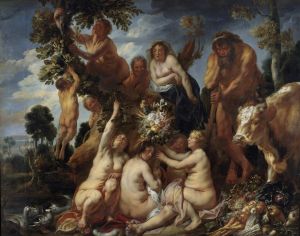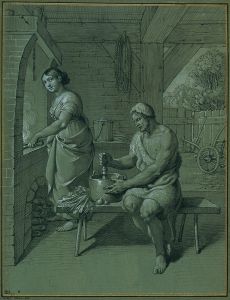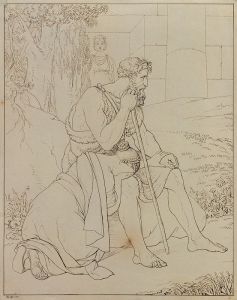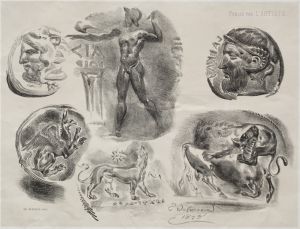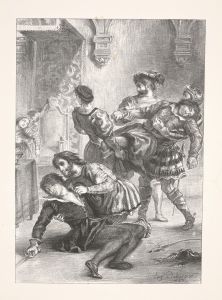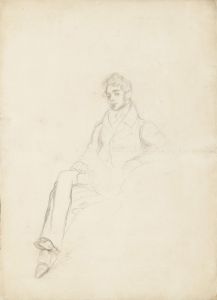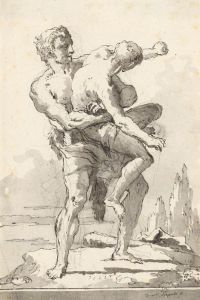
Hercules Between Virtue and Vice
A hand-painted replica of Eugène Delacroix’s masterpiece Hercules Between Virtue and Vice, meticulously crafted by professional artists to capture the true essence of the original. Each piece is created with museum-quality canvas and rare mineral pigments, carefully painted by experienced artists with delicate brushstrokes and rich, layered colors to perfectly recreate the texture of the original artwork. Unlike machine-printed reproductions, this hand-painted version brings the painting to life, infused with the artist’s emotions and skill in every stroke. Whether for personal collection or home decoration, it instantly elevates the artistic atmosphere of any space.
Eugène Delacroix, a leading figure of the French Romantic movement, is renowned for his vibrant use of color and expressive brushwork. Among his numerous works, "Hercules Between Virtue and Vice" stands out as a compelling exploration of classical themes through the lens of Romanticism. This painting, created in 1858, is a testament to Delacroix's fascination with mythology and his ability to convey complex narratives through art.
"Hercules Between Virtue and Vice" depicts the mythological hero Hercules at a pivotal moment of moral decision. The scene is inspired by the ancient allegory of Hercules at the crossroads, a story that illustrates the hero's choice between a life of ease and pleasure, represented by Vice, and a life of hardship and glory, represented by Virtue. This theme was a popular subject in art and literature, symbolizing the universal human struggle between temptation and righteousness.
In Delacroix's interpretation, Hercules is portrayed as a muscular, youthful figure, embodying strength and potential. He stands at the center of the composition, flanked by two allegorical figures: Virtue and Vice. Virtue is depicted as a serene and dignified woman, often shown in classical attire, symbolizing purity and moral integrity. In contrast, Vice is portrayed as a more alluring and sensuous figure, embodying the seductive nature of temptation.
Delacroix's use of color and light plays a crucial role in conveying the painting's moral message. The artist employs a rich palette, with warm tones highlighting the figure of Vice, drawing the viewer's eye to her seductive presence. In contrast, cooler and more subdued colors are used for Virtue, emphasizing her calm and steadfast nature. This contrast not only enhances the visual impact of the painting but also underscores the tension between the two opposing forces.
The composition of "Hercules Between Virtue and Vice" reflects Delacroix's mastery of dynamic movement and emotional intensity. The figures are arranged in a triangular formation, with Hercules at the apex, suggesting the weight of his decision. The interplay of gestures and expressions further animates the scene, capturing the psychological complexity of Hercules's choice.
Delacroix's interest in classical themes was influenced by his admiration for the works of earlier masters, such as Rubens and Titian, as well as his own travels to North Africa and Spain, which enriched his understanding of color and light. "Hercules Between Virtue and Vice" exemplifies his ability to reinterpret traditional subjects with a fresh and emotive approach, characteristic of the Romantic movement.
This painting not only reflects Delacroix's technical skill and artistic vision but also his engagement with philosophical and moral questions. By choosing to depict Hercules at this critical juncture, Delacroix invites viewers to contemplate the nature of choice and the consequences of one's actions. The timeless relevance of this theme, combined with Delacroix's expressive style, ensures that "Hercules Between Virtue and Vice" remains a significant work in the canon of 19th-century art.
In summary, "Hercules Between Virtue and Vice" is a masterful example of Eugène Delacroix's ability to blend classical subject matter with Romantic sensibilities. Through his use of color, composition, and narrative, Delacroix creates a powerful visual allegory that continues to resonate with audiences today.





